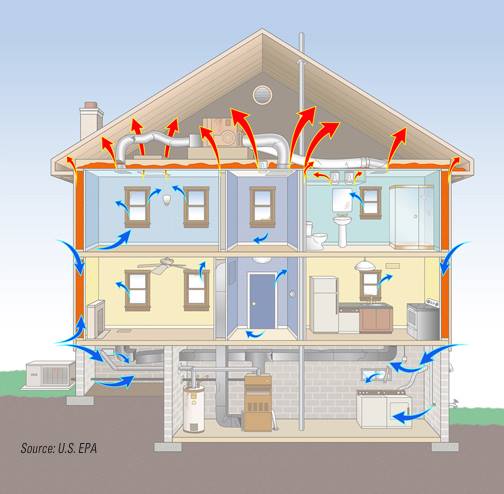IS THE ENERGY IN YOUR HOME GOING “THROUGH THE ROOF”?
Are You Wondering What You Can Do?
· To reduce cold, hot, or drafty spaces in your home?
· To save money on energy bills?
· To take significant and necessary steps to combat climate change?
With the arrival of Earth Month comes the wrap-up of the “Through the Roof” campaign. We’re a bit short of our goal, but we’re hoping there are a few households out there who have made some energy efficiency improvements over the last few months. Check out the resource table on Sunday April 7th and see who’s already on the list here—and let us know if you should be on it!
Many of you let us know that you were planning on taking action. If you have done anything to improve your energy efficiency since this project began or any time in the past few years, Let us know. Send us an email: Date of project and what you did. Email: nancykingsmith@me.com
Help us reach the goal by April by choosing five easy actions from this list, then let us know:The Challenge is a cooperative project with UUCC, the City of Shaker Heights Energy Sub-committee and other Heights faith communities.
There are three ways you can participate:
A. Do five simple low or no-cost actions from the following list to improve your home energy efficiency.
1. Order an Energy Kit from First Energy link here
All customers of Ohio Edison, The Illuminating Company, and Toledo Edison are eligible to receive an energy efficiency kit. The best part? The no cost kit will be shipped directly to you so you can begin saving energy and reducing your utility bill. These kits contain items referred to in several of the following suggested energy-saving activities. Hurry, kits for this program are limited and subject to availability.
2. Change HVAC air filter
Those filters in your furnace are designed to prevent dirt, dust, and other air pollutants from recycling through your home. Once a filter becomes clogged with debris, it requires more energy to run your HVAC system. Mark your calendar to change filters every 2 months or so, or better yet, order the free First Energy kit which includes a furnace filter whistle that lets you know when a filter needs to be changed. To prevent the HVAC unit from turning on while you are changing the filter, make sure you turn the thermostat to the “off” position. This will help protect your HVAC system from loose debris or maybe a loose filter fitting escaping into the duct. Also, while you change the filters, follow the arrow-markings on the side or top of the filter to keep the filter oriented correctly in the direction of air flow.
3. Lower the temperature on the water heater; raise refrigerator/freezer temperatures
Water heaters are the second-highest energy thief in the home. Keeping the temperature at 120 degrees Fahrenheit can trim 6% to 10% from your energy bill. Never set the temperature below 120 degrees, because it allows dangerous, unhealthy organisms to grow inside your water tank. Use an accurate thermometer or the “hot water gauge card” in the First Energy kit. Set refrigerator to 37 F and freezer to 3 degrees. Turn off ice-maker except when needed, saving 15-20% of your refrigerator energy usage.
4. Clear air vents
Locate all the vents in your home. Are they open and clear of obstruction? If there are toys, furniture, or other things blocking a vent, clear them away. The easier it is for air to move through the home, the less energy it requires.
5. Stop air leaks
One of the most effective, least expensive things you can do to increase energy efficiency is replace caulk and weather stripping around doors and windows every two years. If need be, explore You Tube sites such as this one to find one that satisfactorily teaches you how to do this. While you’re at it, walk around the exterior of your home with a can of spray foam insulation. Fill gaps around windows, cement and bricks, and ground pipes. Use ladders only at your own risk and if you are experienced.
6. Unplug vampire electronics
Many electronic devices continue to use a small amount of energy when connected to an outlet — even if they’re not being actively used. Energy.gov recommends unplugging electronics or using a power strip* for things like televisions, stereos, computers, and large appliances. Request free First Energy Kit.
7. Use a programmable thermostat
Install a programmable thermostat and in colder weather schedule your home’s heat to lower when you are away or asleep, and increase when you are returning home or waking-up. In warm weather, schedule the thermostat to raise the temperature when you are away or asleep, and lower it at other times. You may be able to install a simple programmable thermostat yourself, but may need an HVAC technician to install one with more complicated wiring. Also, it’s also important to locate your thermostat in the right place.
8. Use your dishwasher more efficiently
Consumer Reports tells us that dishwashers built after 2011 work better on unrinsed dishes. In fact, pre-rinsing your dishes sends the wrong message to the dishwasher’s sensor, indicating that the dishes are clean and require only a light wash. To save work, water, and energy, run a full load and only pre-rinse if dishes are going to stand unwashed for more than a few hours. Also, dishwashing by hand uses 2-5 times more water. You can save even more energy by air-drying dishes rather than using the drying cycle on the machine.
9. Adjust your laundry habits
Energy Star says that nearly 90% of energy consumption from a washing machine is due to heating the water, and the American Cleaning Institute says that modern soaps work well at lower temperatures. So except for difficult stains, make it a habit to wash your clothes in cold or luke-warm water. And if you’re not doing so already, clean the lint trap in the dryer with every use to maintain energy efficiency and prevent fire.
10. Replace an aging appliance with an Energy Star version, often with rebates
Chances are that an appliance labelled Energy Star will use 10-20% less energy than your present appliance, and given Energy Star Appliance Rebates, prices may be affordable. Examples of Energy Star Appliances include: Refrigerators, Clothes Dryers, Dishwashers, Room Air Conditioners, Dehumidifiers, Air Purifiers, and Freezers.
11. Make the switch to LED light bulbs
Switch your home’s most frequently used bulbs with ENERGY STAR® certified LEDs. They last at least 25x longer and consume up to 90% less electricity than incandescent bulbs. For starters, obtain several free LED bulbs in the First Energy Kit.
12. Winter Tip: Invite the Sun In
Open curtains/shade on your west-and south-facing windows during the day to allow sunlight to naturally heat your home, and save 2%-12% off your energy bill.
13. Summer Tip: Close Blinds and Shades
During the day, keep your blinds and shades closed to prevent warm air from building up in your home.
14. Replace old showerheads and faucets with “Watersense”-labelled accessories
An average family will save 2700 gallons of heated water a year or 333 kwh electricity by installing devices that reduce water flow by 30 percent or more without sacrificing performance.
15. Use smaller appliances for heating small portions
For cooking or heating small amounts of food, use a smaller appliance (e.g. microwave or toaster oven) to save 50% energy compared to heating or broiling in an oven.
.
B. Get an energy audit. If you have Dominion gas service (most of us do) call Dominion Energy Ohio’s Home Performance Program to schedule an appointment for just $25: (877) 287-3416. This program ends 2-15-2024. This low cost program may be not longer taking customers. But there is one company that we know of that is doing audits for a cost: Berry Insulation in Cleveland
C. Work with a contractor to make improvements and take advantage of Dominion and Inflation Reduction Act (IRA) funds. The Inflation Reduction Act (IRA) of 2022 is the most significant climate legislation in U.S. history, offering funding, programs and incentives to accelerate our urgent transition to a clean energy economy. It is intended to drive significant deployment of new clean electricity resources in all our homes and businesses. The IRA offers funding to tighten the envelope of your house so that you use less energy. That’s a crucial step before installing energy-efficient electrical heating and cooling system so they are sized to the smaller amount of energy you use.
……………………
Between now and Earth Day in April, UU Ministry for Earth will be providing resources on the first Sunday of every month to support congregants in taking action.
Once you’ve completed option A, B or C, add a post-it to the House Poster Fellowship Hall indicating your name and what you did. You’ll be added to the UUCC “Through the Roof Households” list and invited to our inter-faith celebration in April.

This effort is part of the McKimm-funded Energy Efficiency Project to make our UUCC building and our homes align with our earth- and justice-oriented UU principles.
Additional Resources:
Check out the Shaker Heights Home Energy Efficiency Program for more information
YouTube / “Energy 101: Home Energy Assessment”
IRS sheet: “Energy Efficient Home Improvement Credit”
Share this post:
